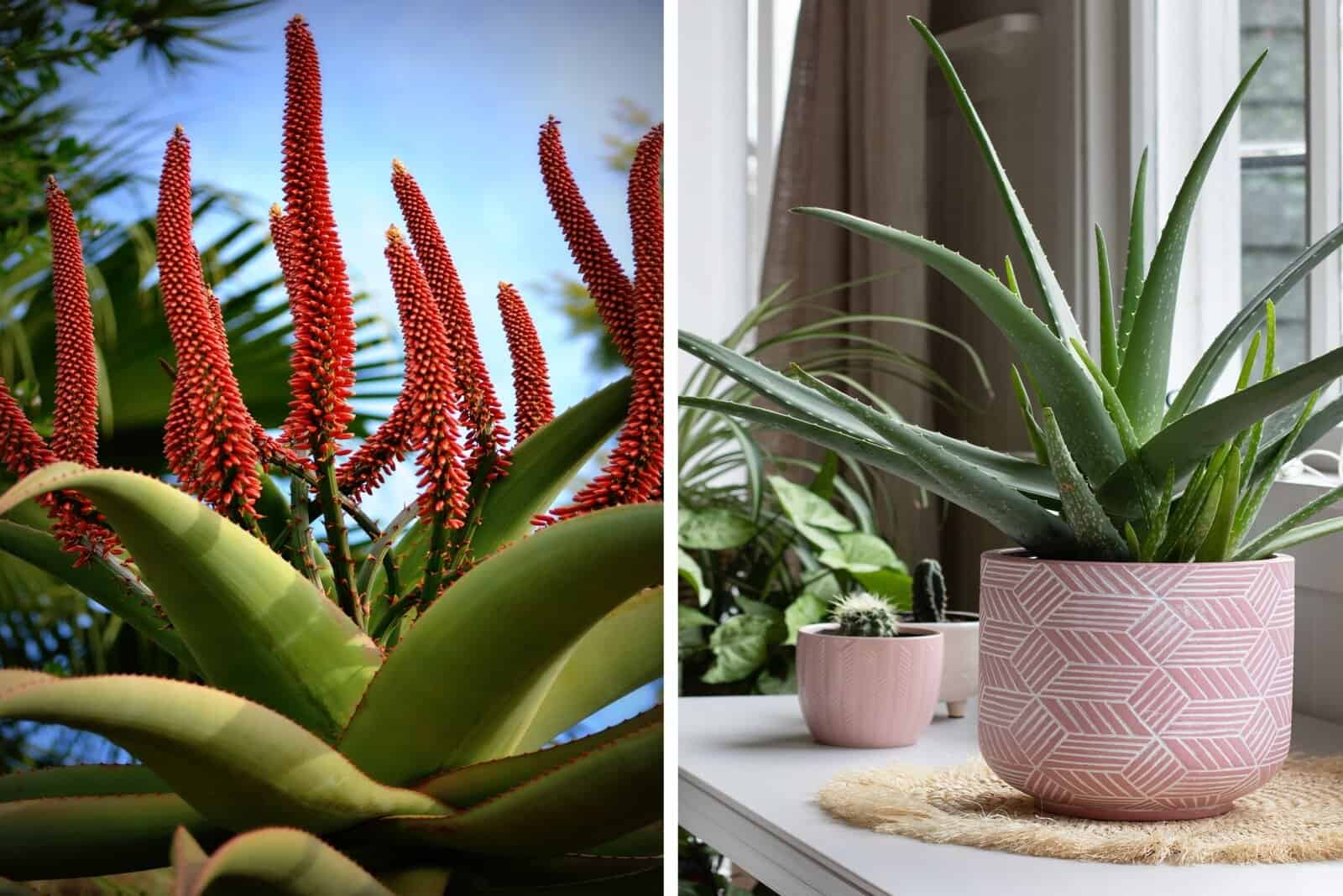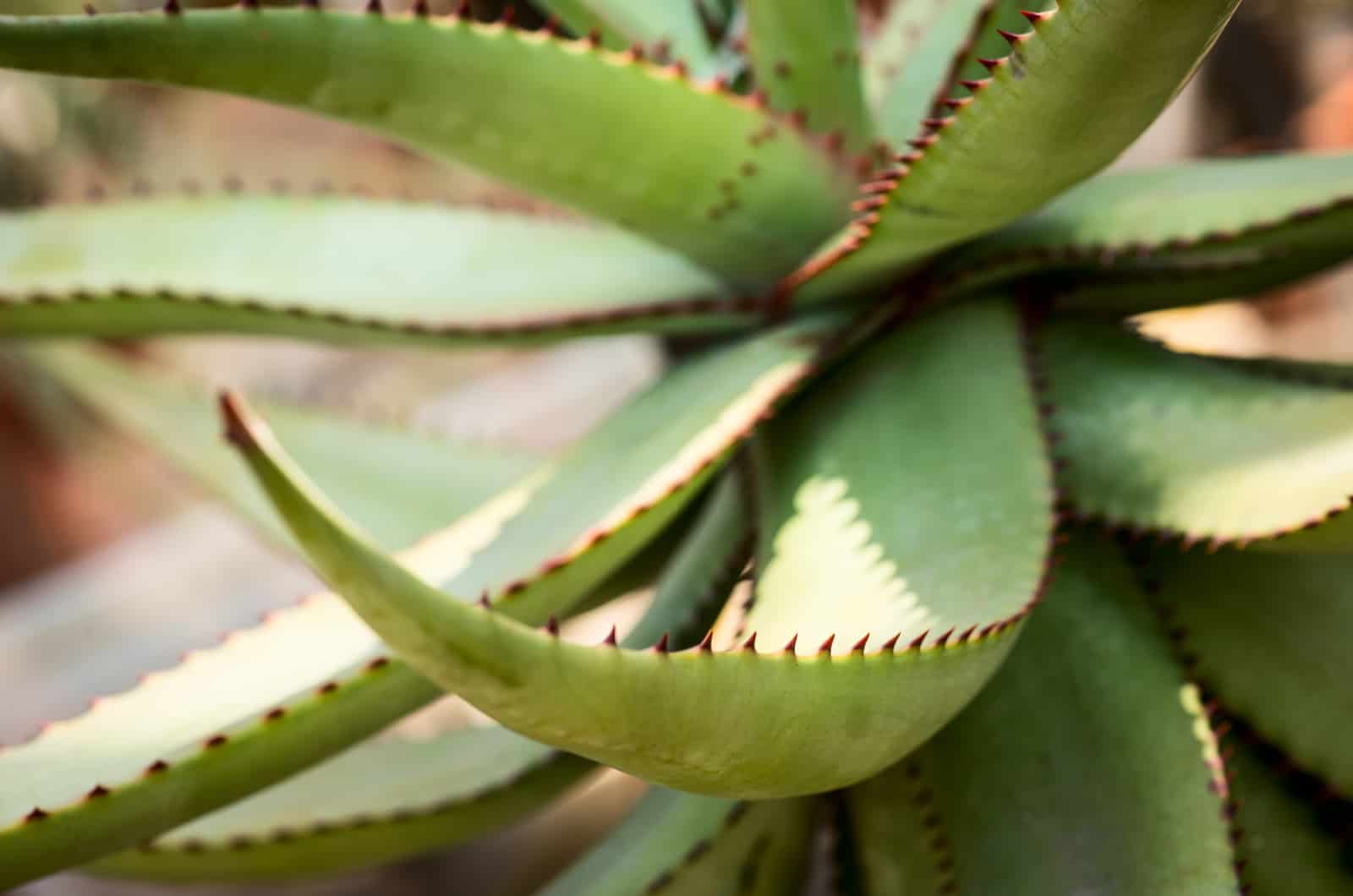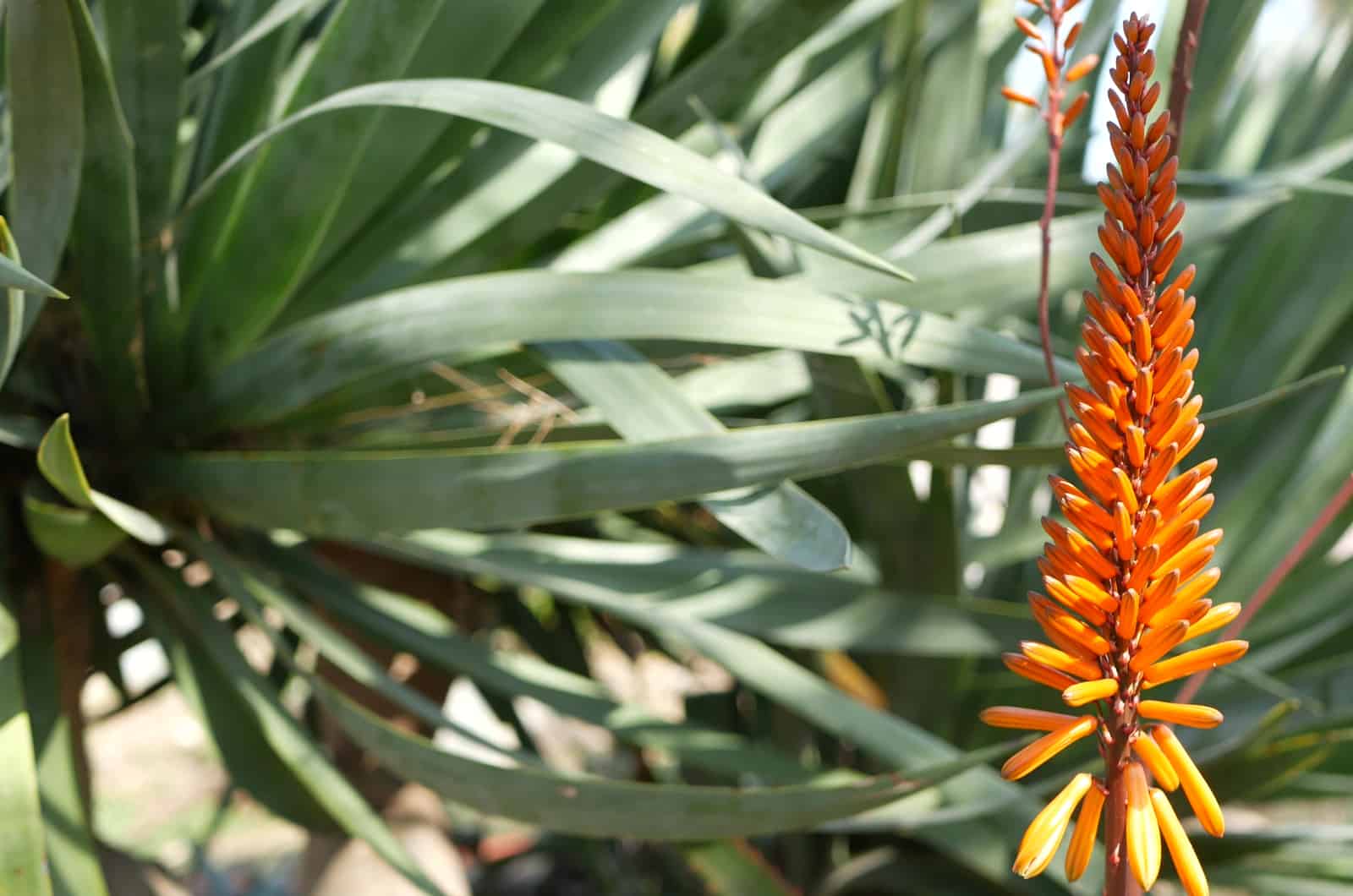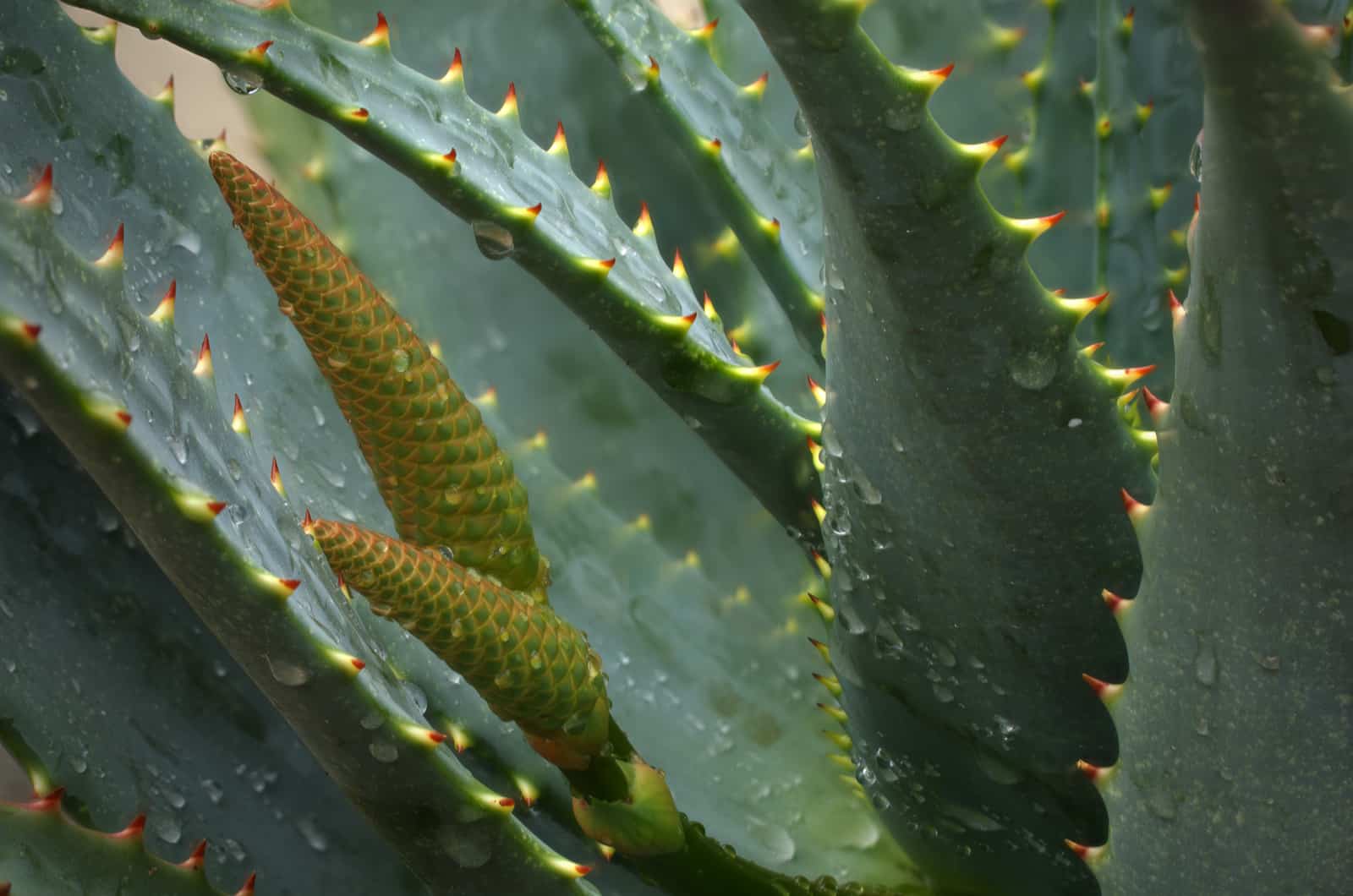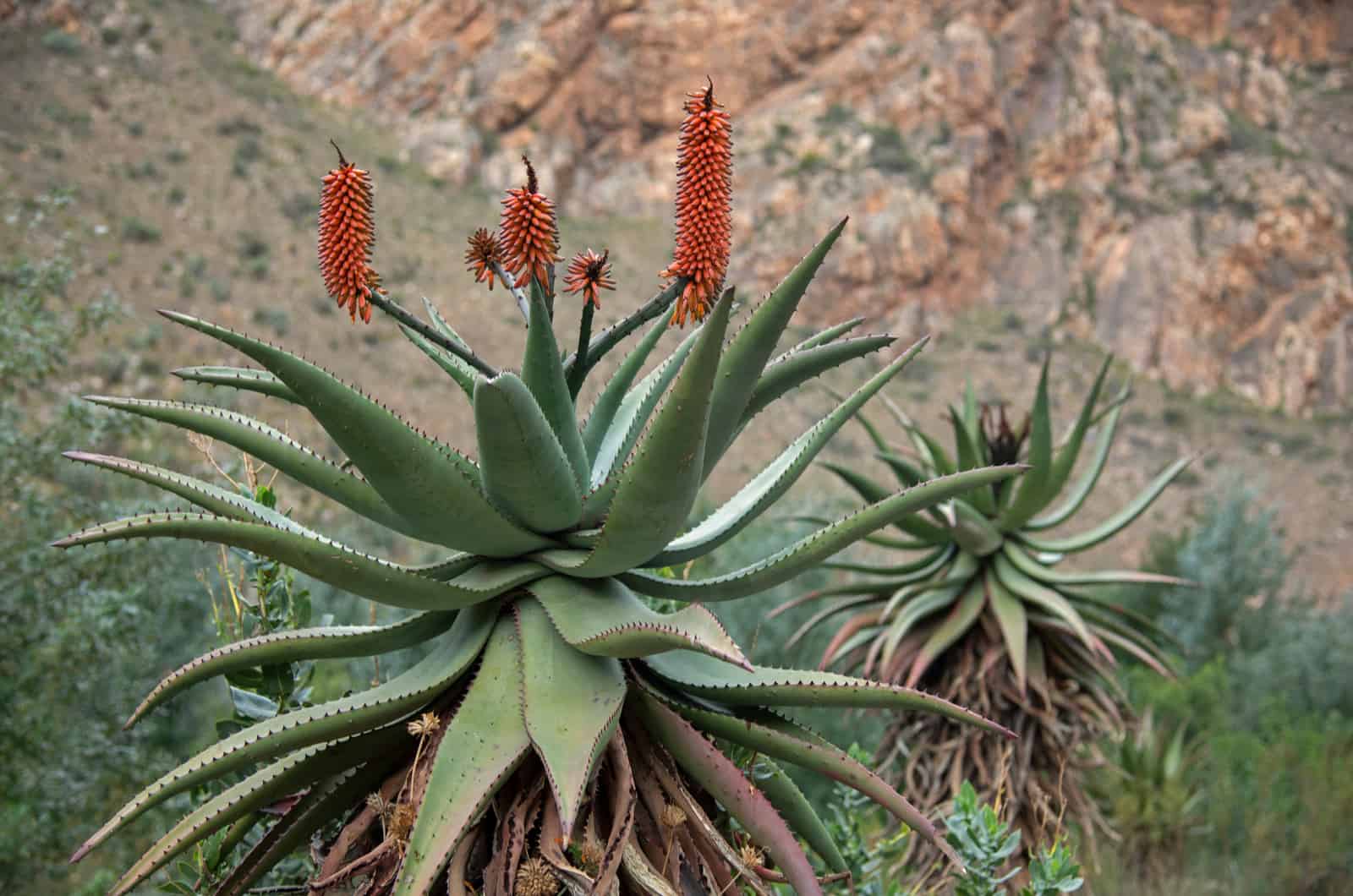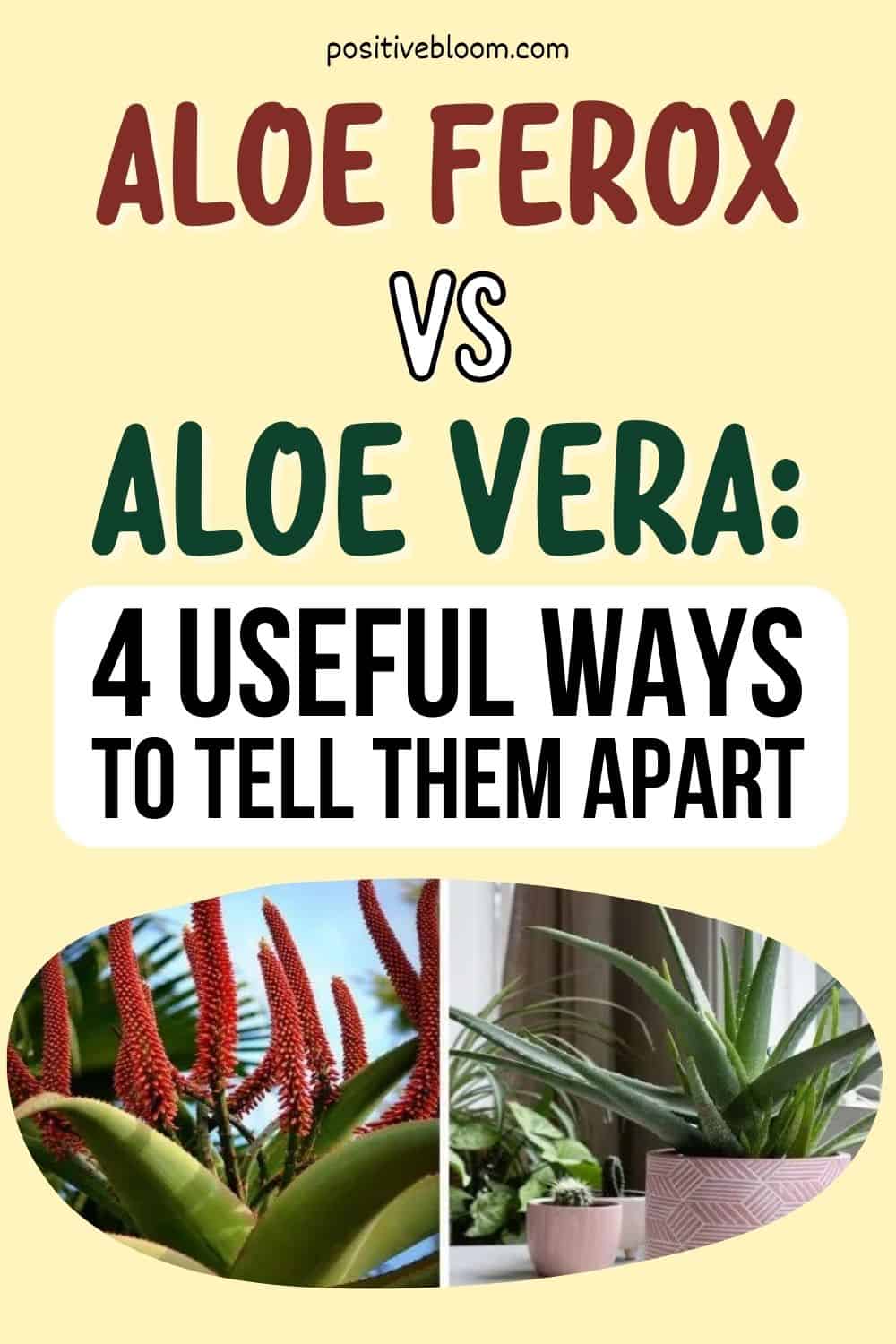Aloe vera has many health benefits and different applications, but what about aloe ferox? Most people haven’t even heard of it!
However, this plant has amazing effects just like aloe vera, and it can help with wound healing, sunburns, and more.
Before we get carried away by these plants’ myriad benefits, let’s look into their general specifics:
[table id=198 /]
This article will explore the main differences between aloe ferox and vera, their respective benefits, and some similarities they share.
(Although, no one would have any issues differentiating between the two visually).
So, let’s learn more about these aloe plants!
Aloe Ferox vs Aloe Vera
Aloe ferox is commonly known as bitter aloe, Cape aloe, red aloe, and tap aloe, but aloe vera has always been aloe vera.
Both of these plants have healing properties, but their chemical composition is different, which is why we decided to examine them closer. You will know exactly which one you need by the time you finish reading this article, so let’s get into it!
Gel Strength And Consistency
The main difference between these two medicinal plants is in their gel. Both aloes contain amino acids, which are considered to be the building blocks of protein and new cells, but a. ferox has twice as many amino acids as aloe vera gel.
The gel of this south-African succulent permeates through to the deepest skin layer, which makes it an ideal ingredient for skincare.
The gel consistency isn’t the same for aloe vera and aloe ferox plants. The gel of aloe vera is soft and thick at the same time, but once you remove it from the plant’s fleshy leaves it loses its consistency and becomes almost jelly-like and less viscous.
We’re all used to seeing colorless aloe vera gel, but it can actually oxidize when it comes into contact with the air and turn light pink or red.
Aloe ferox gel, on the other hand, keeps its consistency much longer than aloe vera after being removed from the leaf, but it is less translucent.
Amount Of Sap
Both aloe vera and aloe ferox contain yellow, bitter sap enriched with aloin, an anthraquinone derivative. However, a. ferox has 20 times more of the same sap than a. vera.
As aloin is an antioxidant, aloe ferox sap is turned into tablets, crystals, capsules, or powders and can even be taken as a food supplement.
Placement Of Aloin And Filtration
The placement of aloin in aloe leaves is also different for a. vera and ferox. In aloe vera, we find this compound throughout the leaves and it cannot be extracted naturally, which means we cannot separate it from the gel by hand.
Instead, the gel has to undergo a chemical extraction process. If you don’t want to experience its laxative effects, you shouldn’t ever eat fresh aloe vera gel!
With the a. ferox, we find aloin under the leaf skin, which makes it easy to separate it from the leaf gel.
Due to their differing aloin positions, vera and ferox differ in their need for filtration. A. ferox doesn’t have to be filtered, so it keeps all active ingredients in their natural form.
However, the gel of the aloe vera plant has to be filtered due to the high concentration of aloin.
Shape
Aloe ferox and aloe vera also differ in their shape. The a. ferox is much taller than a. vera. Also, aloe ferox has a large stem crowned by rosettes, whereas a. vera has a small stem or, in most cases, no stem at all.
Both plants have tiny spines on their leaves when young, but they lose most of them as they get older and become less vulnerable.
A. ferox’s leaves are typically blue-green and decorated with brown thorns along the edges. Aloe vera, on the other hand, can be either blue-green or gray-green without the dark brown spikes along the edges.
Finally, both of these plants have similar inflorescences. A. ferox grows large stalks with orange, tubular blooms, which can be red, orange, yellow, and anything in between. Aloe vera flowers don’t differ that much, except they are both smaller and grow on smaller stalks.
Both plants need favorable conditions and climates to bloom, which is why we don’t see domestic aloe veras adorned with these beautiful colors very often.
Habitat
When it comes to their habitat. A. ferox is indigenous to South Africa and can be found in the entire Eastern Cape Province, KwaZulu-Natal in the east, in the southern parts of Lesotho and Free State in the north, and from Overberg DC and Swellendam in the Western Cape.
Aloe ferox usually grows on rocky terrain in large numbers, but it can grow in grassy African regions as well. An interesting thing about this plant is that its appearance changes in different areas due to weather conditions.
Aloe vera can grow pretty much anywhere if it’s warm enough. You can grow it outdoors in USDA hardiness zones 9 and 10, or indoors if your climate is colder than this.
Aloe Ferox vs Aloe Vera: Similarities
Even though these plants have many differences, their care guides are virtually identical.
They are also similar in their application and benefits and are both used in cosmetics and for making moisturizing creams.
Let’s learn more about these plants!
Care Guide
Both aloe vera and ferox are succulents, which means they require very little care and offer much in return. Their plant care requirements are pretty much the same for the aloe arborescens, ferox, and vera.
They need warm weather, just a little bit of water, and plenty of sunlight to prosper. However, that’s just a rough draft of the aloe plant care guidelines, and you will learn about caring for these aloe plants in the following section.
Light Requirements
Both of these plants thrive in full sun conditions and require at least six hours of sunlight per day. They are best grown outside if your climate allows it, but nothing terrible will happen if you grow an aloe inside.
However, you should keep it on a sunny windowsill or at least place it under some grow lights to keep it healthy and strong.
Remember, if these plants don’t receive enough sunlight they’ll grow leggy, weak, and unable to support the fleshy leaves.
Water And Humidity
Even though aloe plants are succulents, they still need water. An underwater aloe vera plant does exist, but you definitely want to avoid it.
The watering requirements of a. ferox and vera are rather simple; just allow the soil to completely dry before watering.
The soil can take anywhere between 1-3 weeks to dry depending on the climate and weather conditions, so be sure to check the soil at least once a week.
It is much more common to overwater than underwater aloe plants, so don‘t irrigate them unless you’ve checked the soil first.
Humidity
Both these plants thrive in low humidity levels, although they can tolerate household humidity of up to 40-50%.
You don’t have to amend your home in any way or buy a humidifier, pebble tray, or sprayer to mist these aloes.
Temperature
The perfect temperature range for these plants is between 55-80°F (13-27°C), although they can survive temperatures higher than that.
However, neither of these plants is cold-hardy, so if they’re exposed to temperatures below 40°F (4°C) for a prolonged period of time you’ll have a hard time keeping them alive.
Soil And Fertilizer
The good news is that there is a soil especially made for succulents, so you won’t have to bash your head against the wall trying to mix the perfect blend.
These species of aloe require a growing medium with excellent drainage, but fertility that isn’t too high, so don’t add too much compost.
You can create your own soil mix by adding perlite, sand, bark, and other coarse materials that don’t retain water for too long. You should also add peat moss, which holds in moisture and releases it whenever the plant is thirsty.
Fertilizer
These plants don’t require very fertile soil, but they should still be fertilized once in a while to avoid nutrient deficiency.
These plants don’t need too much fertilizer, so you can feed them once or twice a year with a succulent fertilizer. Always ensure you follow the instructions on the packaging.
Finally, always fertilize this plant during its growing season because it cannot use the food you give it in the winter when dormant.
Repotting
Aloe plants are slow-growing, so you won’t have to repot them too often. However, if you notice that their soil mix has degraded or that there are too many pups, you should repot them using fresh soil.
The best time to repot a. ferox and a. vera is in spring when they start actively growing again. This way they can get stronger and prepare for winter.
Aloe Ferox vs Aloe Vera: Benefits
Both aloe vera and aloe ferox have many applications and benefits, most of which are quite similar. However, a. ferox is much more potent than a. vera, which makes it a better choice.
Aloe Ferox Benefits
Aloe ferox has many health benefits. So many, in fact, that we’re not sure where to begin! It is filled with vitamins A, B2, B5, B6, C, and E, which is why it’s a favorite skincare ingredient.
Due to all these vitamins, aloe ferox gel can create a protective barrier on your skin and keep it safe from oxidative damage. It also protects your skin from losing moisture, helps with wound healing, induces melanin production, and has powerful anti-inflammatory and antioxidant properties.
It keeps your skin safe from sunburns and inhibits damage caused by UVA and UVB rays, neutralizes free radicals, and promotes the growth and formation of cells and tissues. Finally, vitamin C can whiten dark skin spots and vitamin E prevents premature aging, reduces excessive amounts of pigment, and keeps your skin healthy.
A. ferox is incredibly beneficial for your skin, and not just because of all the vitamins it contains. It also has polysaccharides that promote healthy, nourished, and moisturized skin, and are also believed to reduce the symptoms of psoriasis.
A. ferox gel contains many enzymes that stimulate cell growth. It dilates blood vessels so nutrients can be translocated more quickly, resulting in the speeding up of many beneficial processes such as cell regeneration, repair, growth, and rejuvenation.
Due to the high amounts of aloin, aloe ferox can also be used as a purgative and help with constipation.
Finally, a. ferox sap contains compounds with antimicrobial effects that are used for treating STDs, and can even relieve mucus and inflammation caused by allergies.
Aloe Vera Benefits
Aloe vera has many benefits, which are almost the same as those of a. ferox, but less potent, so it’ll take much more to achieve the same results.
However, it is still one of the best ingredients in face creams and helps with soothing sunburns and healing wounds quickly.
It also helps with constipation and can even help maintain blood sugar levels. A. vera gel can prevent wrinkles, speed up mouth ulcer healing, and even reduce plaque.
Q&A Corner
Aloe plants are incredibly healthy, so it’s not surprising that people want to learn more about them.
Below you can find some answers to the most frequently asked questions about aloe plants and learn more about them and their different uses.
What are the common side effects of aloe ferox?
Even though aloe ferox has tremendous benefits to your overall health, some individuals can experience issues such as stomach ache, nausea, diarrhea, and electrolyte imbalance.
You should always consult your doctor before using this plant. It should also be noted that it has contraction effects on the uterus, so you shouldn’t use it during pregnancy or while nursing.
Remember that a. ferox sap acts as a laxative, so be careful about the amounts you use.
Which type of aloe is good for sensitive skin and acne?
Both aloe ferox and aloe vera are suitable for sensitive skin and skin prone to acne due to their healing and antibacterial properties.
They also help with inflammation and keep your skin moisturized, so you can use them on any skin type.
It is up to you to decide which one to use. On one hand, aloe vera is more readily available, but on the other, a. ferox is stronger.
Wrapping Up
We’ve reached the end of our article, and now we have examined the differences and similarities between aloe ferox vs aloe vera, you shouldn’t have any trouble differentiating between them.
There are many chemical differences between these plants, such as the gel and sap strength and placement of aloins. However, there are also some physical differences, such as their structure, overall appearance, and native habitat.
There are also some things that connect the two plants, and those are their care guides and health benefits, which are virtually the same.
Now you can decide which one to grow and benefit from.
Until next time!
Like this post? Share or pin it for later!

